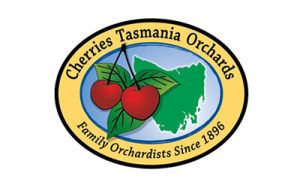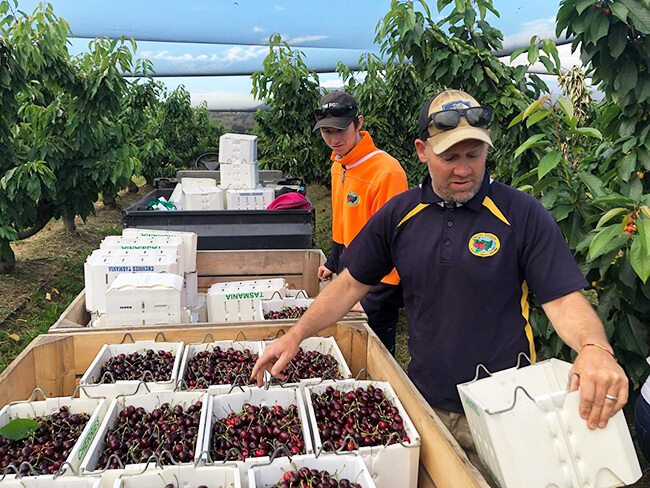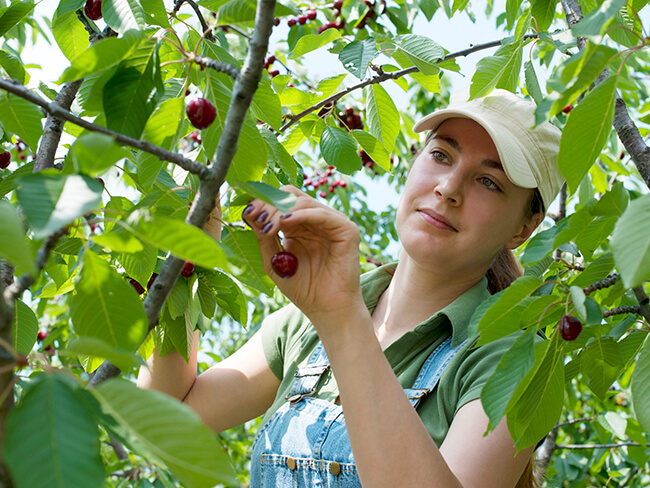Cherries
A model application
Family owned and operated Cherries Tasmania Orchards produces premium cherries over some 80 hectares at Old Beach, near Hobart. Operated by fourth-generation orchardist Nic Hansen and family, it employs up to 200 seasonal workers during the peak of its summer production which runs for eight to nine weeks. AgPick was implemented in 2021.
The challenge
When the Fair Work Commission announced a variation to its Horticulture Award in 2021 – placing the onus on growers to record piece rates and pay pickers the minimum hourly rate by April 2022 – Cherries Tasmania Orchards seized the opportunity to take its record keeping to the next level at the same time.
The seasoned producer had been looking for some time to migrate to an automated system to manage its labour before managing director Nic Hansen met the AgPick team at the 2021 Fruit Growers Tasmania conference and started the conversation.
As part of its due diligence during the section process, Cherries Tasmania spoke to other producers already using AgPick and found both the technology and the team came highly recommended – the technology for its ease of use and accuracy and the team for its relatable and approachable manner.
Once engaged, AgPick’s mission was to have the system implemented and operational in time for the 2021 harvest.
The solution
To specifically address Cherries Tasmania’s needs, AgPick enhanced the tool’s functionality to create a cherry model.
A detailed dashboard captures and uploads information in real-time. AgPick’s accurate reporting system aids traceability by informing growers who has picked their fruit, who is leading in production and what quality issues may be attributed to pickers. The shed team also knows what volume and grade of fruit to expect. This enables the grower to get better control over quality issues, take appropriate action and eliminate potentially costly QA errors.
AgPick enhances piece-rate calculations and reports – recording different piece-rates for different jobs on multiple blocks, all of which can be exported to payroll. The system supports both hourly and piece-rate operations and allows individual workers to easily move between hourly and piece-rates.
It also implements a ‘net change’ history of every change, using an immutable block chain of the user’s interactions with the system, where it can replay whole days of work from base transactions, adjust final results and easily understand a process that occurs in the real world. It also pre-works transaction data into a real-time read-store that enriches data and makes it query friendly. The same APIs are used for the mobile client and portal, using a modern browser framework.
The outcome
AgPick was set up and implemented in four weeks and was on the ground and ready to go from day of the Cherries Tasmania harvest. It can now be easily applied to any cherry operation quickly.
Horticulture Award compliance was the immediate benefit for Cherries Tasmania. However, as more data is collected from future harvests, Nic Hansen expects increased productivity and efficiencies to follow, such as knowing when pickers are at their most productive or when it is time to call it a day.
Direct entry of picker quantities is used to support picking and recording. AgPick can select “grade” and “customer” to enable immediate reporting of quantities picked by contract or grade at the block level and summarised by day.
It records attendance and labour information for all on-farm activities, including maintenance and Capex plus packing shed labour management.
As well as tracking picker movements and productivity, the model includes an SMS system which allows growers to directly recruit and communicate with prospective pickers to plan their labour, ahead of cherry season.
With much intensity around cherry season, this helps growers organise and book their own labour with certainty, after several years of disruption to the workforce and labour hire company landscape due to the global pandemic. This feature is applicable to any fresh produce grower who uses seasonal workforces to hand-pick produce.
“By collecting better data over future harvest seasons, we’ll be able to determine when people are at their most productive and when we need to call it a day.”
– Nic Hansen, Cherries Tasmania Orchards.






